Clancy Tucker's Blog, page 200
January 10, 2017
11 January 2017 - ORIGIN OF THE HANDSHAKE
ORIGIN OF THE HANDSHAKE
G'day folks,
Ever wondered where handshakes started?
The handshake has existed in some form or another for thousands of years, but its origins are somewhat murky. One popular theory is that the gesture began as a way of conveying peaceful intentions. By extending their empty right hands, strangers could show that they were not holding weapons and bore no ill will toward one another.
Some even suggest that the up-and-down motion of the handshake was supposed to dislodge any knives or daggers that might be hidden up a sleeve. Yet another explanation is that the handshake was a symbol of good faith when making an oath or promise.

When they clasped hands, people showed that their word was a sacred bond. “An agreement can be expressed quickly and clearly in words,” the historian Walter Burkert once explained, “but is only made effective by a ritual gesture: open, weaponless hands stretched out toward one another, grasping each other in a mutual handshake.”
One of the earliest depictions of a handshake is found in a ninth century B.C. relief, which shows the Assyrian King Shalmaneser III pressing the flesh with a Babylonian ruler to seal an alliance. The epic poet Homer described handshakes several times in his “Iliad” and “Odyssey,” most often in relation to pledges and displays of trust.
The gesture was also a recurring motif in the fourth and fifth century B.C. Greek funerary art. Gravestones would often depict the deceased person shaking hands with a member of their family, signifying either a final farewell or the eternal bond between the living and the dead.

In ancient Rome, meanwhile, the handshake was often used as a symbol of friendship and loyalty. Pairs of clasped hands even appeared on Roman coins.

While the handshake had several meanings in the ancient world, its use as an everyday greeting is a more recent phenomenon. Some historians believe it was popularized by the 17th century Quakers, who viewed a simple handclasp as a more egalitarian alternative to bowing or tipping a hat. The greeting later became commonplace, and by the 1800s, etiquette manuals often included guidelines for the proper handshaking technique. As is often suggested today, the Victorian shake was supposed to be firm but not overly strong. One 1877 guide counseled its readers that, “a gentleman who rudely presses the hand offered him in salutation, or too violently shakes it, ought never to have an opportunity to repeat his offense.”

Clancy's comment: There ya go.
I'm ...


Published on January 10, 2017 12:59
January 9, 2017
10 January 2017 - BRITISH SLANG

BRITISH SLANG
G'day folks,
I am always pleased to enlighten you, especially you authors, who are seeking new words to use in your novels. Look no further.
To - We go to school from ages 5 to 18. You might go to school from ages 5 thru 18. We don't say thru in that context at all. If we did though, we would say "through"!
Todger - As if we don't have enough of them already, this is yet another word for your willy, or penis.
Toodle pip - This is an old expression meaning goodbye. However, I only hear it when Americans are doing impressions of Brits as it has fallen into disuse, along with steam trains and gas lights.
Tool - Yet another word for your willy or penis. You'd think we were obsessed.
TTFN - Short for "ta ta for now". Which in turn means goodbye! Said by older folks and one Radio Two DJ in particular.
Twat - Another word used to insult someone who has upset you. Also means the same as fanny but is less acceptable in front of your grandmother, as this refers to parts of the female anatomy. Another use for the same word is to twat something, which would be to hit it hard. Get it right or I'll twat you over the head!
Twee - Twee is a word you would generally hear older people say. It means dainty or quaint. A bit like the way you chaps think of England I suppose.
Twit - You twit! Not so rude as calling someone an idiot but it amounts to the same thing. Remember Monty Python's "Twit of the Year" competition? Other versions include "nitwit".
Two finger salute - When you see a Brit stick up two fingers at you in a V shape, he may be ordering two of something (if his palms are toward you). The other way around and it's an insult along the lines of your one finger salute. Which, by the way, is very popular here now too!
U - A letter used far more in British. It is in words like colour, favour, labour etc. I think this is why UK keyboards have 102 characters on them instead of your 101, or is it because they have a poundsign on them?
Uni - Short for university, we would say we went to uni like you would say you went to school. School here is just for kids.
Wacky backy - This is the stuff in a joint, otherwise known as potor marijuana!
Waffle - To waffle means to talk on and on about nothing. It is not something you eat. Americans often think that Brits waffle on about the weather. The truth of course is that our news reports last 60-120 seconds and the weather man is not hyped up to be some kind of superstar as he is on the TV in the US. If you want to see an example of real waffle watch the weather channel in Texas where there is nothing to talk about other than it is hot and will remain so for the next 6 months. Another example is the ladies who waffle on about anything on the Home Shopping Network. They would probably be classed as professional wafflers!

Clancy's comment: Toodle pip and TFN ...
I'm ...


Published on January 09, 2017 13:21
January 8, 2017
9 January 2017 - BENJAMIN FRANKLIN

BENJAMIN FRANKLIN
G'day folks,
Welcome to some interesting facts about a famous American.
Benjamin Franklin was a scientist, ambassador, philosopher, statesmen, writer, businessman and celebrated free thinker and wit. He has often been referred to as ‘America’s renaissance man’ and was emblematic of the fledgling American nation.
Benjamin Franklin was born January 17, 1706 into a large and poor family. His father had 17 children by 2 different wives. Benjamin was brought up in the family business of candle making and his brother’s printing shop. Whenever he could Benjamin would take the opportunity to read and learn about a wide range of subjects, from Sophocles to modern science. Whilst co workers would take a leisurely lunch break, Benjamin Franklin would pore over books from the bookshop munching on some raisins.

At an early age, he also started writing articles which were published in the New England Coureant under a pseudonym; Franklin wrote under pseudonym’s throughout his life. After several were published, he admitted to his father that he had wrote them. Rather than being pleased his father beat him for his impudence. Therefore, aged 17, the young Benjamin left the family business and travelled to Philadelphia.
In Philadelphia, Benjamin’s reputation as an acerbic man of letters grew. His writings were both humorous and satirical, but they also raised the fears of the Pennsylvania governor, William Keith. William Keith was fearful of Benjamin’s talents so offered him a job in England with all expenses paid. Benjamin took the offer, but once in England the governor deserted Franklin, leaving him with no funds.

Benjamin Franklin frequently found himself in awkward situations, but his natural resourcefulness and determination always overcame difficult odds. Benjamin found a job at a printers in London. Here he was known as the “Water American” – as he preferred to drink water rather than the usual 6 pints of beer daily. Franklin remarked there was ‘more nourishment in a pennyworth of bread than in a quart of beer.
In 1726, a Quaker Merchant, Mr. Denham offered him a position in Philadelphia. Franklin accepted and sailed back to the US.

On his journey home, Benjamin wrote a list of 13 virtues he thought important for his future life. Amongst these were temperance, frugality, sincerity, justice and tranquillity. He originally had 12, but, since a friend remarked he had great pride, he added a 13th – humility (Imitate Jesus and Socrates)
Science experiments were a hobby of Franklin. This led to the:Franklin stove – a mechanism for distributing heat throughout a room.The famous kite and key in the thunderstorm. This proved that lightening and electricity were one and the same thing.He was the first person to give electricity positive and negative chargesThe first flexible urinary catheterGlass harmonicaBifocal glasses. Franklin never patented his inventions, preferring to offer them freely for the benefit of society.
Franklin was chosen as an ambassador to England in the dispute over taxes. For five years he held conferences with political leaders as well as continuing his scientific experiments and musical studies.
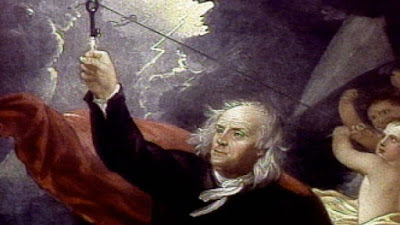
Later on Franklin played a key role in warning the British government over the dangers of taxing the American colonies. In a contest of wills, Franklin was instrumental in encouraging the British Parliament to revoke the hated Stamp Act. However, this reversal was to be short lived. And when further taxes were issued, Franklin declared himself a supporter of the new American independence movement.
In 1775, he returned to America in conflict. He was one of the five representatives chosen to draw up the American declaration of Independence with Thomas Jefferson as author.
Franklin was chosen to be America’s ambassador to France, were he worked hard to gain the support of the French in America’s war effort. During his time in French society, Franklin was widely admired, and his portrait hung in many houses.
At the age of 75, the newly formed US government beseeched Franklin to be America’s representative in signing a peace treaty with Great Britain which was signed in 1783.
He was finally replaced as French ambassador by Thomas Jefferson, who paid tribute to his enormous capacity Jefferson remarked ‘I succeed him; no one can replace him.”

Benjamin Franklin believed in God throughout his life. In his early life he professed a belief in Deism. However, he never gave too much importance to to organised religion. He was well known for his religious tolerance, and it was remarked how people from different religions could think of him as one of them. As John Adams remarked:
“The Catholics thought him almost a Catholic. The Church of England claimed him as one of them. The Presbyterian’s thought him half a Presbyterian, and the Friends believed him a wet Quaker.”
Franklin embodied the spirit of the enlightenment and spirituality over organised religion.
Franklin was a keen debater, but his style was to avoid confrontation and condemnation. He would prefer to argue topics through the asking of awkward questions, not dissimilar to the Greek philosopher Socrates.

Clancy's comment: A clever man in more ways than one.
I'm ...


Published on January 08, 2017 12:31
January 7, 2017
8 January 2017 - CONFUSING WORDS
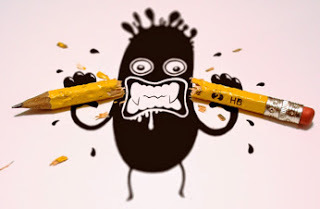
CONFUSING WORDS
G'day folks,
Welcome to some more of those tricky words.
principal / principle
Principal is a noun that means a person who holds a high position or plays an important role: “The school principal has 20 years of teaching experience. The principals in the negotiations will meet tomorrow at 10 o'clock.” It also means a sum of money on which interest accrues: “The depositors were guaranteed they would not lose their principal.” Principal is also an adjective that means chief or leading: “The necessity of moving to another city was the principal reason I turned down the job offer.”
Principle is a noun that means a rule or standard: “They refused to compromise their principles.”

soap / detergent
Soap, a noun, is a cleansing agent that comes from natural fats and oils.
Detergent, a noun, is a cleansing agent that is usually made from synthetic, or man made, products.

stationary / stationery
Stationary is an adjective that means fixed or unmoving: “They maneuvered around the stationary barrier in the road.”
Stationery is a noun that means writing materials: “We printed the letters on company stationery.”

Clancy's comment: Mm ... Sound familiar?
I'm ...
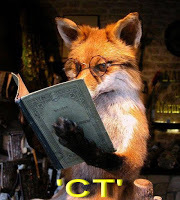
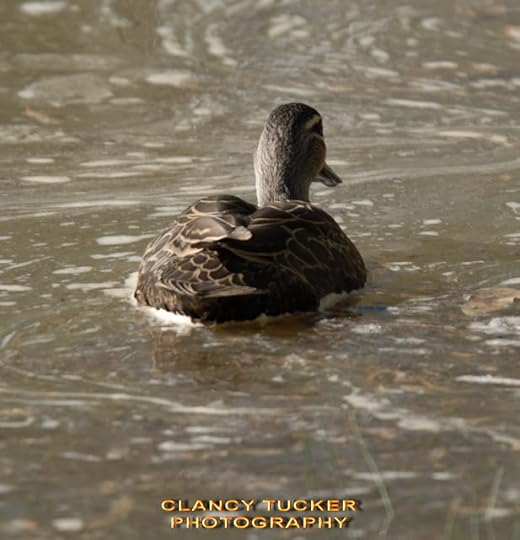
Published on January 07, 2017 12:12
January 3, 2017
4 January 2017 - MOVING PICTURES

MOVING PICTURES
G'day folks,
I know you like these, so here are some more stunning examples ...



[image error]










[image error]

[image error]

[image error]


Clancy's comment: I bet some of these made you smile. The folks who create these seem to love cats and waterfalls.
I'm ...

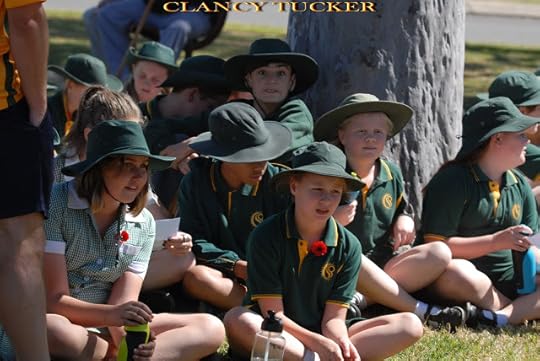
Published on January 03, 2017 11:41
January 2, 2017
3 January 2017 - Dr. DRE - HIP HOP

Dr. DRE- HIP HOP -
G'day folks,
Andre Romelle Young, better known by his stage name Dr. Dre, is an American rapper, record producer, and entrepreneur. He is the founder and current CEO of Aftermath Entertainment and Beats Electronics.
Dr. Dre is the most important purveyor of Gangsta Rap and the key architect of its most musically compelling subgenre, West Coast G-Funk. At the height of Dre’s musical influence, gangsta was the defining oeuvre of a hip hop industry on its way from the underground to the top of the Billboardcharts. In many ways, his contributions both as a rapper and a producer helped to usher hip hop into a new and bigger phase, pushing the genre from the spare beats and predictable R&B breaks of old school into a dense, laid-back style that draws from a far deeper well of funk, fusion, blaxploitation, and jazz samples. As a talent scout, impresario, and businessman, Dr. Dre’s influence over the music business is all encompassing today.

Andre Young was born in the black L.A. barrio called Compton. Young struggled in school and transferred several times to escape the permeating influence of gang violence. Following a brief tenure at the Chester Adult School, Andre dropped out and, joining with Ice Cube and Eazy-E in 1986, changed the face of popular music.
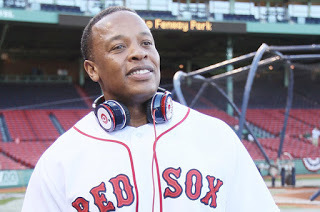
With N.W.A., Dre helped rap some of the starkest, frankest, and most frightening street poetry ever recorded. With their debut, Straight Outta Compton, N.W.A. opened a window into black life in the L.A. ghettos, detailing a violent world in ways that had never been outlined so bluntly, in music or elsewhere. So evocative was their message that their label, Ruthless Records, even earned itself a cautionary letter from the FBI.

At the height of its success, Dr. Dre departed N.W.A. to become the flagship artist at Death Row Records, subsequently releasing 1992’s The Chronic, which stands today as a strong contender for the greatest hip hop record ever pressed. Smoothing out N.W.A.’s rough edges, Dre innovated a slow, drawling, groove-heavy production style fueled by Funkadelic and Ohio Players samples. He also introduced a shy, lanky stoner named Snoop Dogg, who instantly emerged as rap’s most charismatic young talent.

With consequently inescapable MTV and radio smash hits “Nuthin’ but a ‘G’ Thang,” and “Let Me Ride,” The Chronicwent triple platinum, earned Dre a Grammy, and segued directly into Snoop’s ’93 debut, Doggystyle.
Over the course of the next decade, Dr. Dre had the Midas touch, launching some of the most successful careers in rap history through discovery, musical collaboration, and production, including Tupac Shakur, Eminem, 50 Cent, and—the current king of West Coast rap—Kendrick Lamaar. All this and Dr. Dre was ranked by Forbes in 2014 as the highest-paid musician alive. The six-time Grammy Winner recently completed a deal which sent his Beats by Dre line of audiophile headphones to Apple, Inc., for a reported $3 billion, making him hip hop’s top-ranking millionaire.

Clancy's comment: One hellova rich musician.
I'm ...


Published on January 02, 2017 12:20
January 1, 2017
2 January 2017 - What Are Northern and Southern Lights?

What Are Northern and Southern Lights?
G'day folks,
Now, I know you have all wanted to know about this.
An aurora is a natural electric phenomenon that creates bright and colorful light displays in the sky. They are common at higher latitudes, mostly within the Arctic and the Antarctic Circles.
In the Arctic Circle, they are known as aurora borealis or the northern lights, while in the Antarctic Circle they are called aurora australis or the southern lights.
These dramatic and colorful lights are created when electrically charged particles from solar winds enter the Earth’s atmosphere and interact with gases in the atmosphere.

Stream of High Energy Particles
The Sun continuously emits electromagnetic radiation and highly energized particles into space, which produce space weather. Solar wind is part of space weather. It is a continuous stream of highly energized particles – mostly electrons and protons – that flow out from the Sun through space at very high speeds and high temperature. Solar winds can reach speeds of one million miles per hour.
Earth: A Giant Magnet
The Earth is a giant magnet, with its magnetic field extending from the Earth’s core to the area in space where it meets solar winds. The region of this field where the Earth’s magnetic influence dominates over solar winds is known as the magnetosphere. Its shape and size continuously change as it gets bombarded by solar winds.
The Earth’s magnetosphere shields the Earth from solar winds and other harmful cosmic rays. It deflects most of the highly charged particles from solar winds and stops them from entering the Earth’s atmosphere.
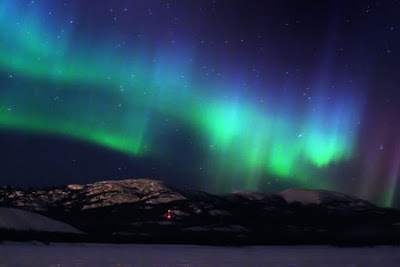
High Energy Collisions
While the Earth’s magnetosphere is responsible for protecting it from the highly charged particles in the solar wind, sometimes, when the conditions are right, these particles enter the Earth’s atmosphere at the two poles, where they collide and interact with gas molecules and atoms.
When such collisions occur, the energy from the electrons in the solar winds is transferred to electrons in the atoms of different atmospheric gases. Any excess energy is then released by these excited atoms in the form of light.
Auroral light displays tend to occur at between 50 miles (80.46 kilometers) and 200 miles (321.87 kilometers) above the surface of the Earth.

Many Different Colors
The color of the light released depends on the kind of gas molecules, their electrical state at the time of collision, and the type of the solar wind particles they collide with. Oxygen atoms emit yellow-green or red colored light, while nitrogen atoms generate blue or purplish-red colored light. A mix of gases in the Earth’s atmosphere creates multicolored auroras.
Because particles from solar winds continually enter the Earth’s atmosphere and interact with gas atoms, aurora displays can be static as well as dynamic – they can change shape and colors, and pulsate in the skies.
And Many Different Shapes
Auroral shapes tend to fall in six categories – curtains, bands, veils, coronas, patches, and rays.

Best Places to See Northern Lights
If one were to look from space, they would see a ring-shaped aurora spanning around 2500 miles (4000 kms) around both poles. This auroral zone covers Central and northern Alaska and Canada, Greenland, northern Scandinavia and Russia in the Northern Hemisphere, and Antarctica in the Southern Hemisphere. In the south, auroras can sometimes be seen from southern Australia, New Zealand, and Chile.
Sometimes a high level of solar activity can lead to strong and violent gusts of solar winds interacting with the Earth’s magnetosphere, causing a geomagnetic storm. This can expand the region around the poles where auroral activity can be observed from, increasing the chances of seeing auroras at lower latitudes.
On very rare occasions, auroral displays can be observed from locations close to the Equator. For instance, in 1909, because of a very strong geomagnetic storm, people in Singapore were able to observe auroral displays.
When's the Best Time to See Auroral Lights?
While auroral activity and auroras can occur throughout the year, day and night, the best time to view them is at night during the winter months. This is because, during the winter, areas around the North and the South Poles have longer periods of darkness.
Auroras are best observed around midnight – when it is darkest – on a clear night, and at a location that is away from the city. Light sources – artificial or natural, like from a full Moon – can make it very hard to view the aurora.
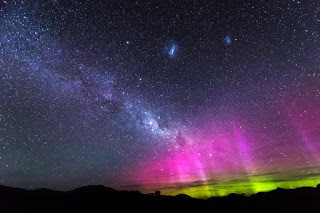
11 Year Cycle
Auroras are directly connected to solar activity, which is measured by the number sunspots– dark spots on the surface of the sun caused by high magnetic activity on the Sun. A larger number of sunspots means that a larger number of highly charged particles are being pushed out by the Sun. This in turn can lead to more northern lights activity on Earth.
Solar astronomers have found that the Sun goes through cycles of solar activity. This cycle, also called the solar cycle, comes around every 11 years.
Scientists have observed 24 solar cycles since 1755 when solar activity started being recorded by humans. The 24th solar cycle is said to have reached its peak sometime in mid-2013.

Did You Know?
Auroras have been observed on some other planets as well. Any planet that has a magnetic field and an atmosphere will have auroral activity.
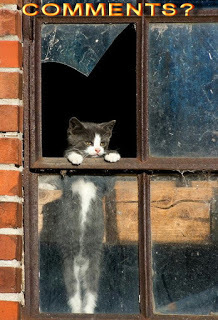
Clancy's comment: Amazing, eh?
I'm ...


Published on January 01, 2017 11:49
December 31, 2016
1 January 2017 - 'BOLD JOURNEY' - SOON TO BE RELEASED
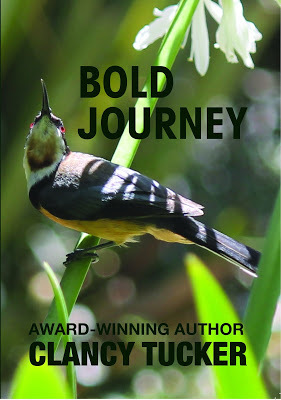
'BOLD JOURNEY'- SOON TO BE RELEASED -
G'day folks,
I've just had my next three books printed, but they will naturally be released one at a time. Here is the first one, due for release within weeks. What's it about? Here is the blurb ...
[image error]
BLURB FOR 'BOLD JOURNEY':
When Severino Agnelli and his family migrate to Australia from Italy in 1954, his son, ‘Fozzie’, meets a beautiful girl, ‘Cat’ Ginelli, on the ship, and they become friends. The Agnelli and Ginelli families love Australia, work hard and forge friendships. Cat becomes a nurse and Fozzie a journalist, but tragedy strikes when Fozzie’s brother is killed in the Vietnam War, and Fozzie spirals into depression when his dad dies. Cat pleads with him to write the book he’s wanted to write – ‘Bold Journey’.
Fozzie flies to London, writes his book, and travels to Italy where he sees Cat interviewed on television, working as a nurse during a famine in Ethiopia. Inspired by Cat, Fozzie heads to Ethiopia to report on the famine, and his passionate reports are syndicated worldwide. Cat is unavailable, but Fozzie leaves a crucifix with her colleague; one Cat made for him in 1954. Returning to London to fight for the Ethiopians, he is hospitalised with meningitis, and Cat flies from Italy to keep a secret vigil by his bedside. Fozzie recovers, and Cat leaves London to get on with her life.
Attending an International Awards ceremony, Fozzie is stunned to win an award for Humanitarian Journalism. Minutes later, Cat is awarded an honour for Exceptional Courage. Will Cat accept her award? Will she and Fozzie finally meet up? Who nominated them for their awards?
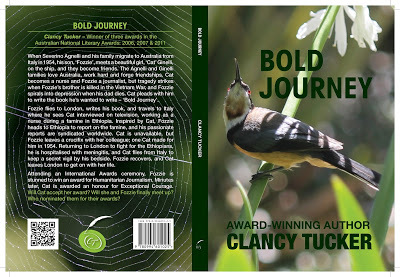
WHAT INSPIRED THIS BOOK?
For many years I worked for the Australian Immigration Department, involved in all facets of Immigration: Approving resident status and citizenship, boarding large ships to meet new immigrants and stamp their passports, interviewing people and approving the issuance of Australian passports, and a raft of other activities. My involvement with migrants inspired me to travel the world and find out exactly where they came from, and that desire to travel and experience all there is, has never left me.

ISSUES COVERED IN THIS BOOK:
Migrants, Italy, immigrants, new arrivals to Australia, romance, a famine in Ethiopia, the Vietnam War, death of a loved one, loyalty, friendships, and all the various struggles and experiences that beset immigrants to a new country.

PURPOSE OF THIS BOOK:
At the start of the book is a dedication: Dedicated to all those who left their country to start a new life in Australia. So, anyone who has done exactly that will relate to most of this book. However, trust me, there is a lilting romance threading its way through the book. Be prepared for the final chapter.
FACTS:
ISBN: 978 0 9946010 2 5 Length: 117 pagesSALES: Paperback and E-bookPrice: To be advised.
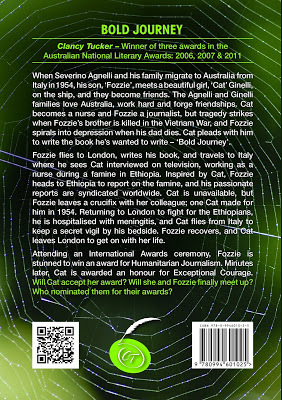 Clancy's comment: Yep, all of my books cover a different topic. However, I bet this one will hook you in from page one. The cover photography is mine of course, and this particular cover shot was taken on my veranda whilst working on my laptop ... My trusty Nikon camera close by. It is a humming bird, waiting to suck the nectar from the flowers of an agapanthus plant.
Clancy's comment: Yep, all of my books cover a different topic. However, I bet this one will hook you in from page one. The cover photography is mine of course, and this particular cover shot was taken on my veranda whilst working on my laptop ... My trusty Nikon camera close by. It is a humming bird, waiting to suck the nectar from the flowers of an agapanthus plant. Stay tuned!
I'm ...


Published on December 31, 2016 12:13
December 30, 2016
31 December 2016 - ROLLING PICTURES
[image error]
ROLLING PICTURES
G'day folks,
Time to check out some rolling photographs as we say goodbye to 2016. Some of these might surprise you.
[image error]








[image error]


[image error]
[image error]





Clancy's comment: Some of these are very clever.

I'm ...

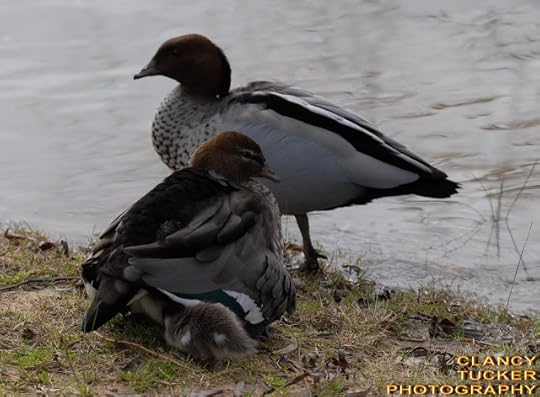
ROLLING PICTURES
G'day folks,
Time to check out some rolling photographs as we say goodbye to 2016. Some of these might surprise you.
[image error]








[image error]


[image error]
[image error]





Clancy's comment: Some of these are very clever.

I'm ...


Published on December 30, 2016 11:15
December 29, 2016
30 December 2016 - MORE BRITISH SLANG
MORE BRITISH SLANG
G'day folks,
Time to enlighten you again with some more British slang. Brace yourself ...
Stuff - A recent headline in the New Statesman read "stuff the millennium". Using stuff in this context is a polite way of saying "f*** the millennium". Who cares! Stuff it! You can also say "stuff him" or "stuff her" meaning they can sod off.
Suss - If you heard someone saying they had you sussed they would mean that they had you figured out! If you were going to suss out something it would mean the same thing.
Sweet fanny adams - This means nothing or sod all. It is a substitute for "sweet f*** all". It is also shortened further to "sweet F A".
Swotting - Swotting means to study hard, the same as cram does. Before exams we used to swot, not that it made any difference to some of us. If you swotted all the time, you would be called a swot - which is not a term of endearment!
Ta - We said "ta" as kids in Liverpool for years before we even knew it was short for thanks.
Table - We use this word in exactly the opposite way. To us a motion is tabled when it is brought to the table, or suggested for consideration. You table a motion when it is left for a later date.
Taking the biscuit - If something really takes the biscuit, it means it out-does everything else and cannot be bettered. Some places in America they said takes the cake.
Taking the mickey - See taking the piss. Variations include "taking the mick" and "taking the Michael".
Taking the piss - One of the things Americans find hardest about the Brits is our sense of humour. It is obviously different and is mainly based on irony, sarcasm and an in-built desire to "take the piss". This has nothing to do with urine, but simply means making fun of someone.
Talent - Talent is the same as totty. Checking out the talent means looking for the sexy young girls (or boys I suppose).
Tara - Pronounced "churar", this is another word for cheerio or goodbye. Cilla Black, a scouse TV presenter has probably done most to promote the use of this word as she says it all the time on her programmes.
Throw a spanner in the works - This is an expression that means to wreck something.
Tickety-boo - If something is going well with no problems we would say it is tickety-boo.
Tidy - Apart from the obvious meaning of neat, tidy also means that a woman is a looker, attractive or sexy.
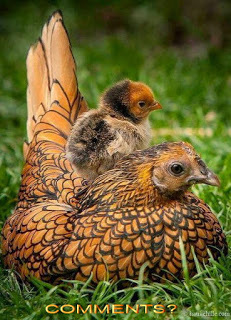
Clancy's comment: A rough lot, eh? It's almost like learning another language. Tara for now.
I'm ...

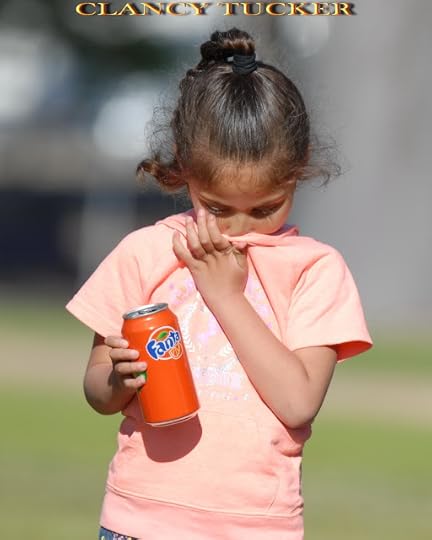
Published on December 29, 2016 11:49



